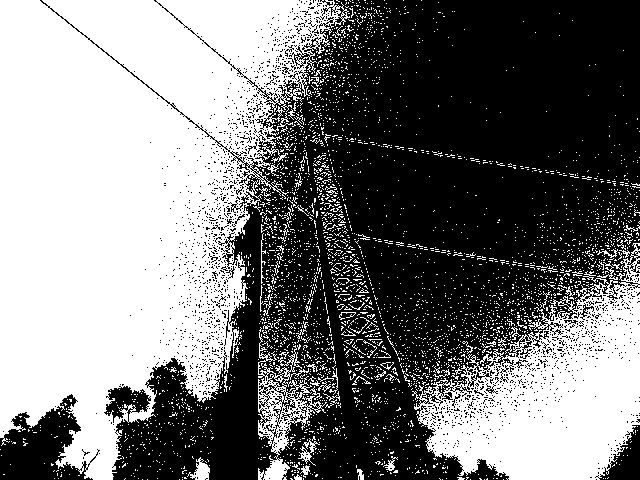KØFF's 5/8 40M Transmit
Antenna
Probably all hams of a certain age have
dreamed about an insulated 5/8 wavelength antenna for 40 meters at one time
or another.
My version of ON4UN's 83 foot transmit
antenna is used at KØFF for 40 meters only, but his article in LOW BAND DXing
shows how to use it on other bands as well.
The first challenge was to decide on
which base insulators to use from the various styles available,
both new and
surplus
Fig. 1:
I chose the medium sized High Voltage Buss insulators,
shown in various sizes in the above photo.
These were mounted between two 1/4" CRS steel plates
that I had designed and built (one is shown in above
photo),
resulting in a "sandwich" that was exceptionally
strong and rated at very high voltages.
A"sandwich" at work. While the compression
strength of the assembly is absolutely no problem, the
shear strength was unknown, so slots were
engineered into the plates to accept steel pipe spacers held in place with
large bolts, used during tilt-over
events.
Fig. 2:
A FEW DETATILS ABOUT THE BASE
INSTALLATION
Three one foot holes for concrete were drilled into
the earth with a tractor mounted post-hole digger. Only about 4 feet
deep,
into these were inserted large J-bolts then filled
with concrete. A form was used to keep the bolts aligned during
curing.
Once prepared, a one meter diameter heavy aluminum
plate was first installed, rim drilled to accept the 1/4" galvanized radial
bolts.
Then on top of the J-bolt is mounted the bottom plate
of the sandwich and the rest installed piece by piece. The top plate of
the sandwich holds the Rohn tiltover clamps to which
the 56' tower is eventually mounted. Radials are tuned and insulated above
ground their whole length, cut for 160, 80
and 40 meters since at the time I had ideas for a multiband
vertical.
A Rohn 56' self-supporting tower was selected to use
as the main antenna element with aluminum tubing gleened from various
previous vertical projects. Out the top of
the tower is a short 2" mast to which the top element is clamped using a typical
vertical antenna mount.
Because the antenna is mounted near the edge of the
bluff, heavy winds were anticipated. To eliminate this as a problem two levels
of Dacron rope were used as guys. Guypoints were made from pieces of UNISTRUT
and bolted to the tower at the joints using the regular tower bolts supplied by
Rohn.
Fig. 3 - Guypoint
hardware:
MATCHING to
FEEDLINE
This antenna is one of several I made to
use 75 Ohm feedline. The L-C match was worked out with the assistance of K7GCO.
Heavy duty parts were employed for long
life, including doorknob capacitors.
Fig. 4:
As usual with my antenna installations, grounding and
counterpoise are considered separate elements.
Next to the antenna I mounted a telephone pole with a
big pulley at the top. With the aid of my trusty tower rope and
tractor, installation and service is a
dream.
FINISHED
ANTENNA
Fig. 5 My dream 40M
antenna:
RESULTS
It's been up over 15 years now and I must
say that I am pleased with the results. No way would I ever use a vertical
antenna to receive on, but for transmitting, it is superb. Signal reports have
been embarrassing actually. Once during the initial test-out, I was tuning up on
SSB, and a stateside ham broke in and said" My gosh! You have the strongest
signal I have ever heard on 40M". I went back to him and explained the antenna,
and that I was tuning up with ONE WATT!
See you in the pileups,
Happy Homebrewing,
Geo>KØFF






